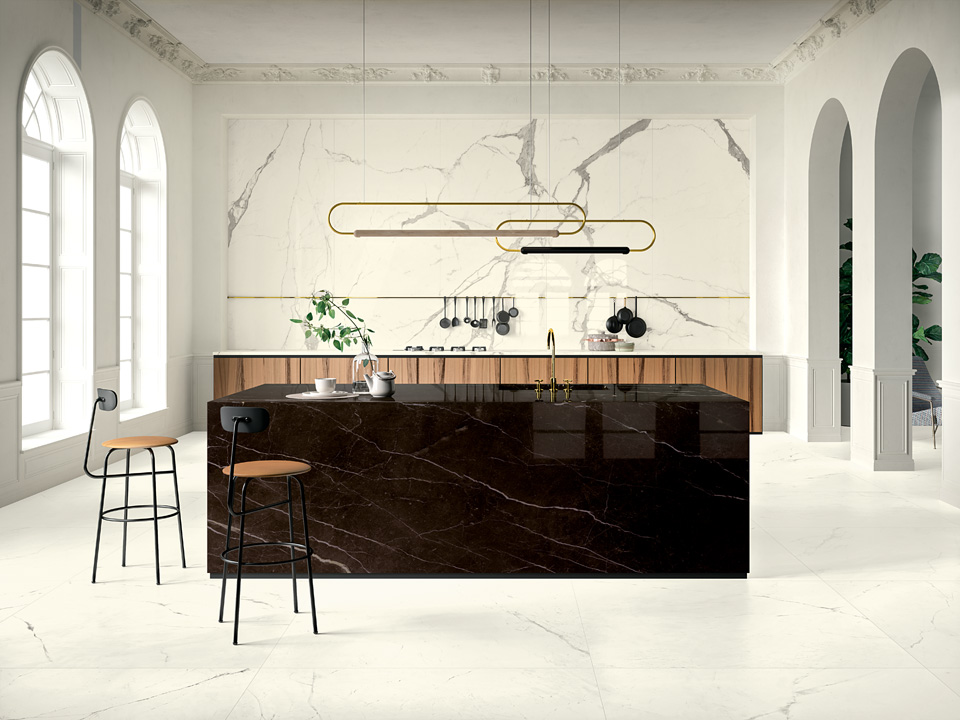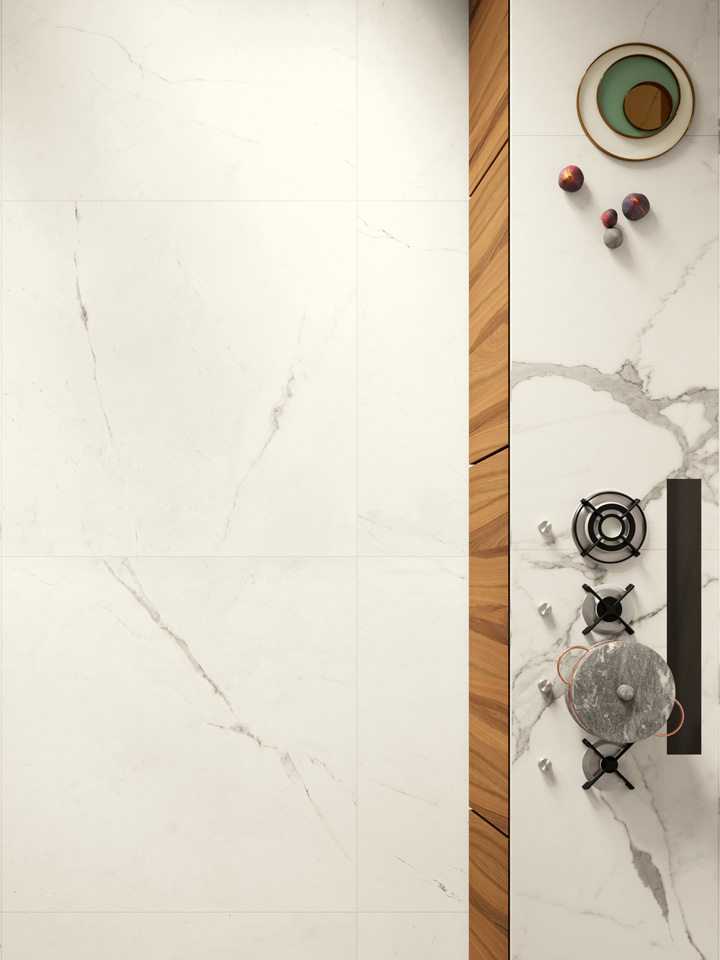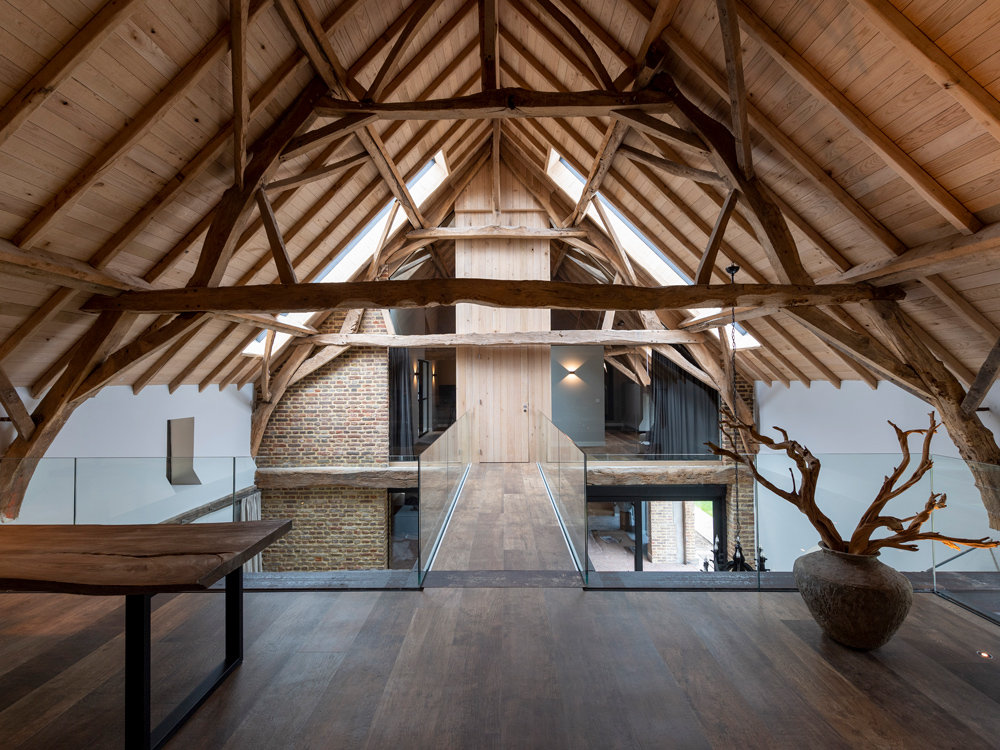In this article we offer a practical guide to choosing the most suitable ceramic kitchen worktop for your space. We’ll take a look at different aesthetic options and assess the benefits of porcelain stoneware as a finish. Finally, we’ll explore the type of ceramic technology used to produce worktops that are beautiful, durable, practical, and easy to clean, ultimately able to satisfy both aesthetic and technical requirements. Because a kitchen worktop isn’t only subjected to extreme stress, but also plays a crucial role in establishing the interior design of what is perhaps the most important room in the home: the kitchen.
en

















